MP Calhoun Street Passenger Station
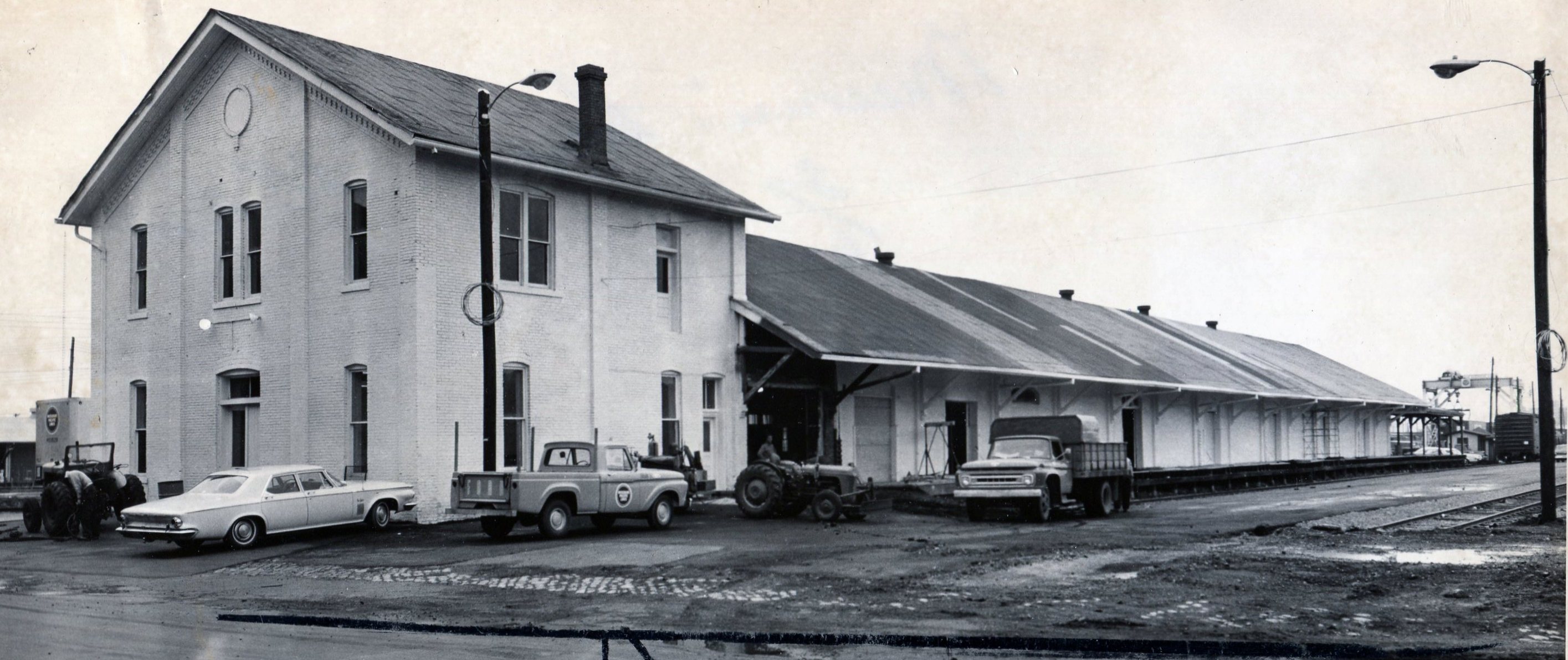 |
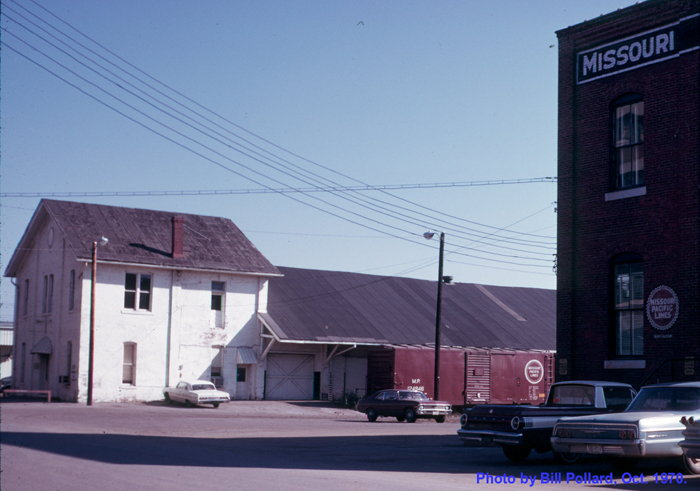 |
Photo by Bill Pollard |
Revenue operation of the Iron Mountain’s Memphis branch began on May 13, 1888. According to the MP 1888 annual report, a large brick freight and passenger depot, 45 feet by 300 feet, was constructed in 1887 and 1888 to provide terminal facilities in Memphis. It is believed that this 1888 structure, with modifications, is the white painted brick building which was located at 43 west Calhoun, a few blocks west of Memphis Central Station. This building served as the Missouri Pacific-Iron Mountain passenger station from the time service began in 1888. When Cotton Belt operated their own passenger trains into Memphis, and particularly after 1899, this structure also served as the Cotton Belt passenger station. On April 1, 1912, the new Memphis Union Station opened for business and both MP-Iron Mountain and Cotton Belt trains moved into the new facility. After 1912, the station continued to be the LCL freight station for Missouri Pacific-Iron Mountain. When another large brick station was built west of this structure, the newer building became the outbound freight station and this older building became the inbound freight station. In the early months of 1964, the three railroads still serving Union Station (Missouri Pacific, L&N and Southern) elected to move their remaining passenger trains elsewhere rather than renew their joint lease on the Union Station operation. Missouri Pacific remodeled their original passenger station at 43 West Calhoun, and moved their single Little Rock-Memphis train into that station on April 1, 1964. A small waiting room and ticket office was established on the ground floor of the freight station and two tracks were designated for passenger train usage. In the meantime, the City of Memphis filed suit against the railroads, claiming that they had abandoned Memphis Union Station unlawfully and without proper authorization from Tennessee regulatory authorities. The case was appealed through several levels of court, but during the legal process Missouri Pacific initiated a discontinuance petition with the Arkansas Public Service commission to make certain that they would not be forced back into Union Station. The Arkansas PSC approved the discontinuance, and MP trains 37-38 made their last trips between Little Rock and Memphis on August 26, 1965. The other two railroads ultimately lost in court and were forced back into Union Station on December 1, 1966. Because the operation of MoPac’s Calhoun Street passenger station was so brief (April 1, 1964 through August 26, 1965) there is little information and few photographs. In order to provide standby steam capability to heat passenger cars in the winter, it was necessary to move one of the former T&P steam generator cars to Memphis. Two tracks were designated for passenger train use, one adjacent to the west side of the station, and the next track west, which was across a roadway. The entire Georgia Street yard and these tracks were accessed from the east, which provided another operational challenge. MP train 38 was scheduled to arrive from Little Rock at 7:01pm. The train came across the river bridge and operated east until the rear car was clear of the route to shove back into the station, a relatively simple procedure. The outbound train, usually a single coach and a half dozen head end cars of storage mail and express, would already be built on the adjacent passenger track. The locomotive from train 38 would be moved over to the head end of train 37 in preparation for its 8:30pm departure for Little Rock. The remainder of train 38’s consist would stay in Memphis to be worked by post office and express personnel and with the coach being cleaned by a coach cleaner. The departure of train 37 was much more complicated because the west leg connection providing direct access to the bridge had been long removed. When departing, train 37 pulled south on the track in and paralleling Kentucky street, crossing Crump Boulevard in the process. When the rear car was clear, the train would shove back to the east around a connecting track that was in the southeast quadrant of that crossing, passing over the Frisco mainlines in the process to get back onto A&MB&T Co trackage. At about the point of the Kentucky Street operator’s office, train 37 could actually begin westbound movement toward the bridge and Arkansas. The actual usage of the two station tracks is uncertain. Photos exist of a train with a single coach on variously the station side and road side; but it appears that train 37 was usually built on the track closest to the station platform. A wide wooden board was placed from platform to vestibule to bridge the gap, while a traditional step box was used when train 38 unloaded passengers from street side. MP traditional yellow baggage wagons were brought in for use, but small post office and express trucks could also back up to the door of baggage cars for more direct loading and unloading. |
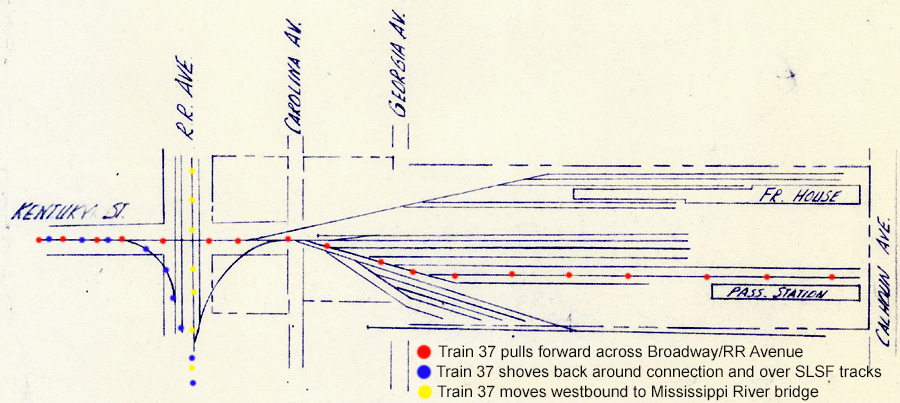 |
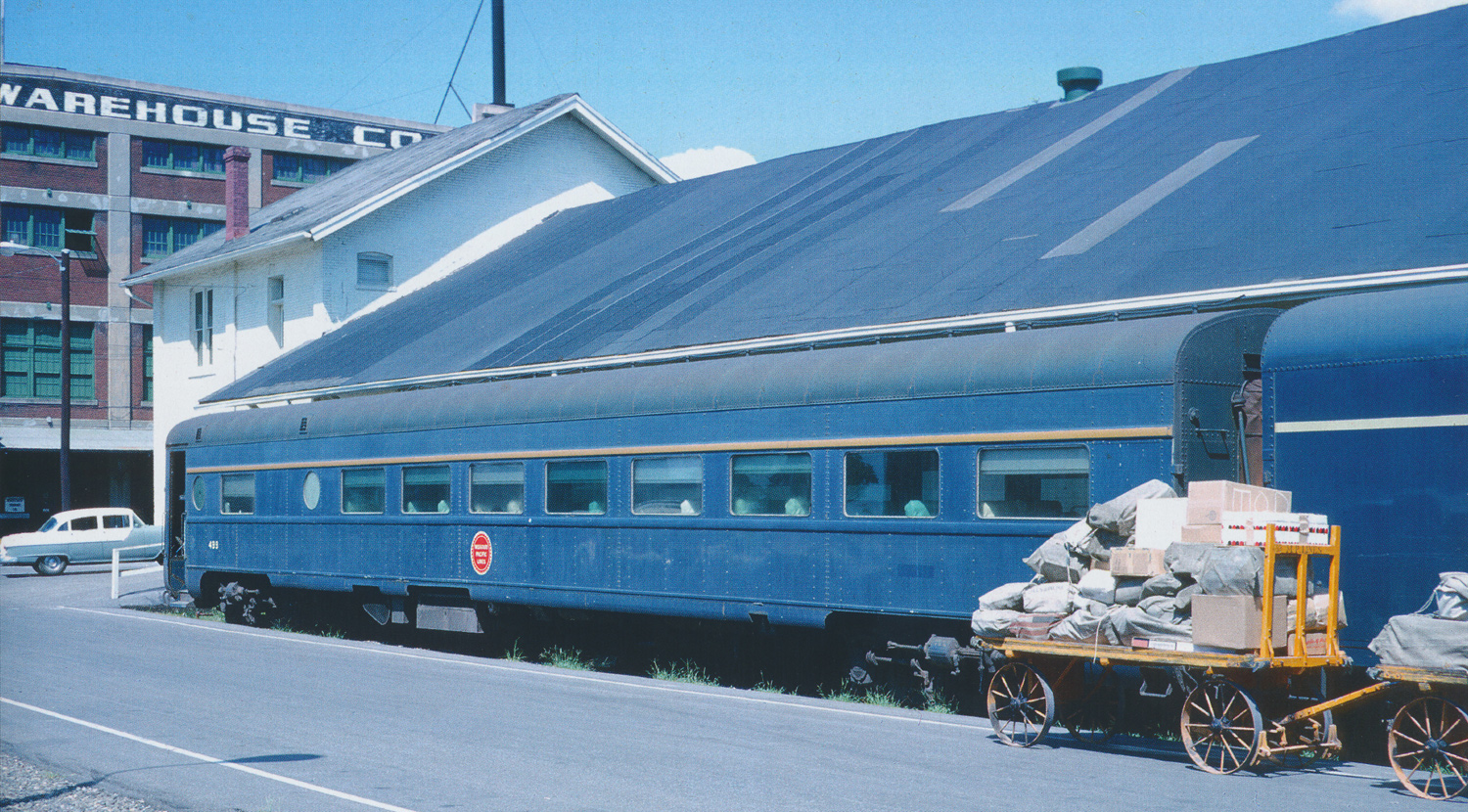 |
This photo, taken by Bill White, shows coach 499 at the Calhoun station on August 14, 1965. The coach arrived the previous evening on train 38 and will depart this evening on train 37. No. 37’s consist on this date included E-unit 41, T&P baggage 867, MP baggage cars 246, 806, 807, 209, 243 and coach 499. |
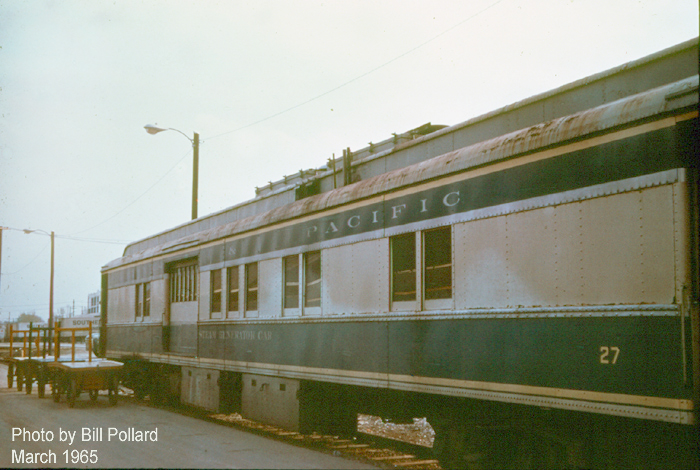 |
Bill Pollard Photo |
| During the time that the Inbound Freight House served as the Memphis passenger station for the Missouri Pacific this Steam Generator Car supplied the "standby steam". |
To return to the Memphis Historical Railroad front page
For information about the Memphis Union Station.
For information about the Memphis Central Station.
For information about the The evolution of Memphis
passenger stations
contributed by Bill Pollard.
Memphis
Passenger Train Timeline 1952-2004
(Data compiled by Phil Gosney)
This site is maintained by the Arkansas Boston Mountains Chapter of the National Railway Historical Society located in Springdale, Arkansas

Home of THE ARKANSAS SCRAMBLER
For questions, email arkyrail at outlook.com